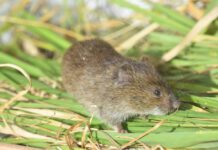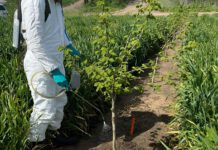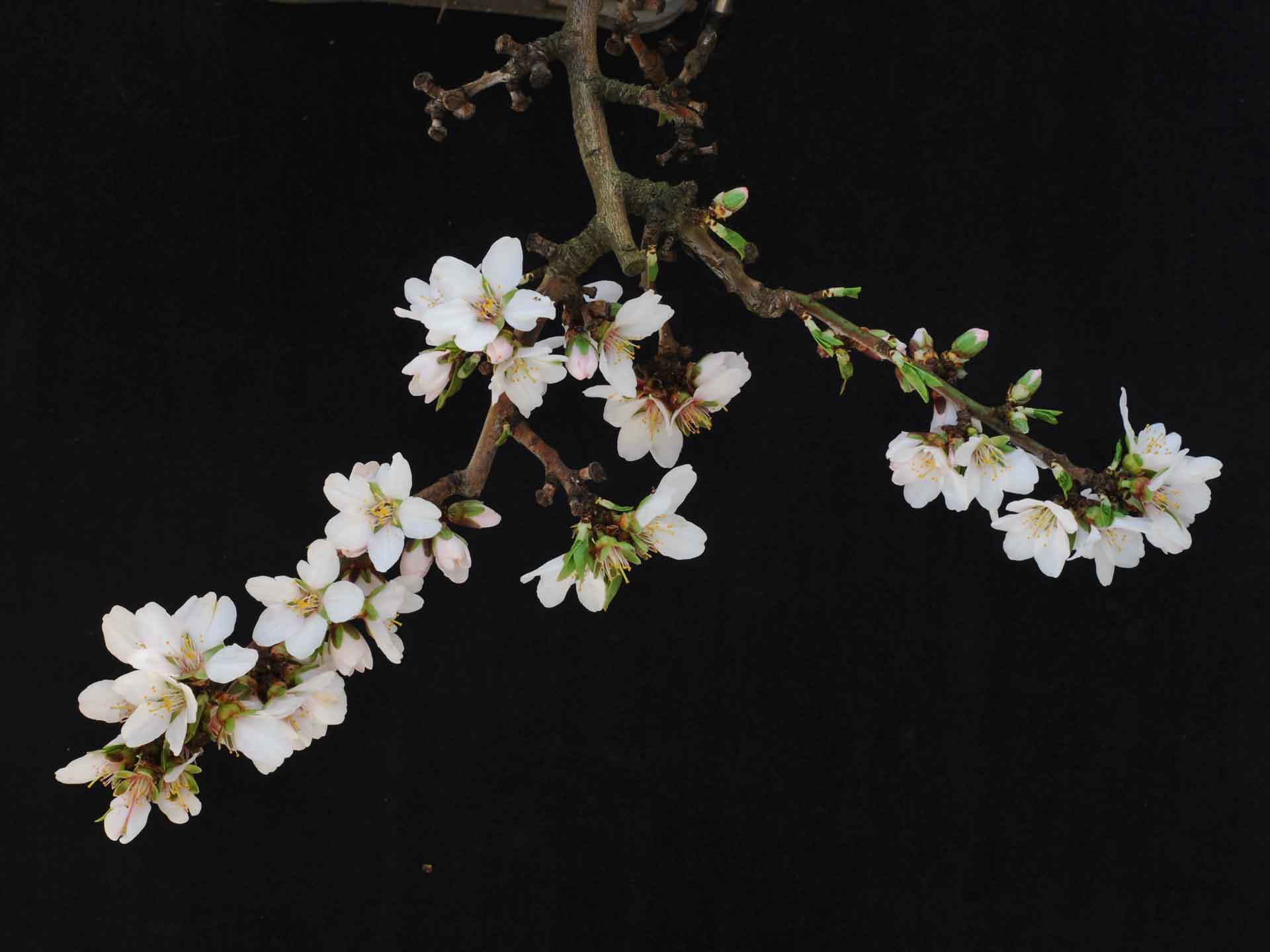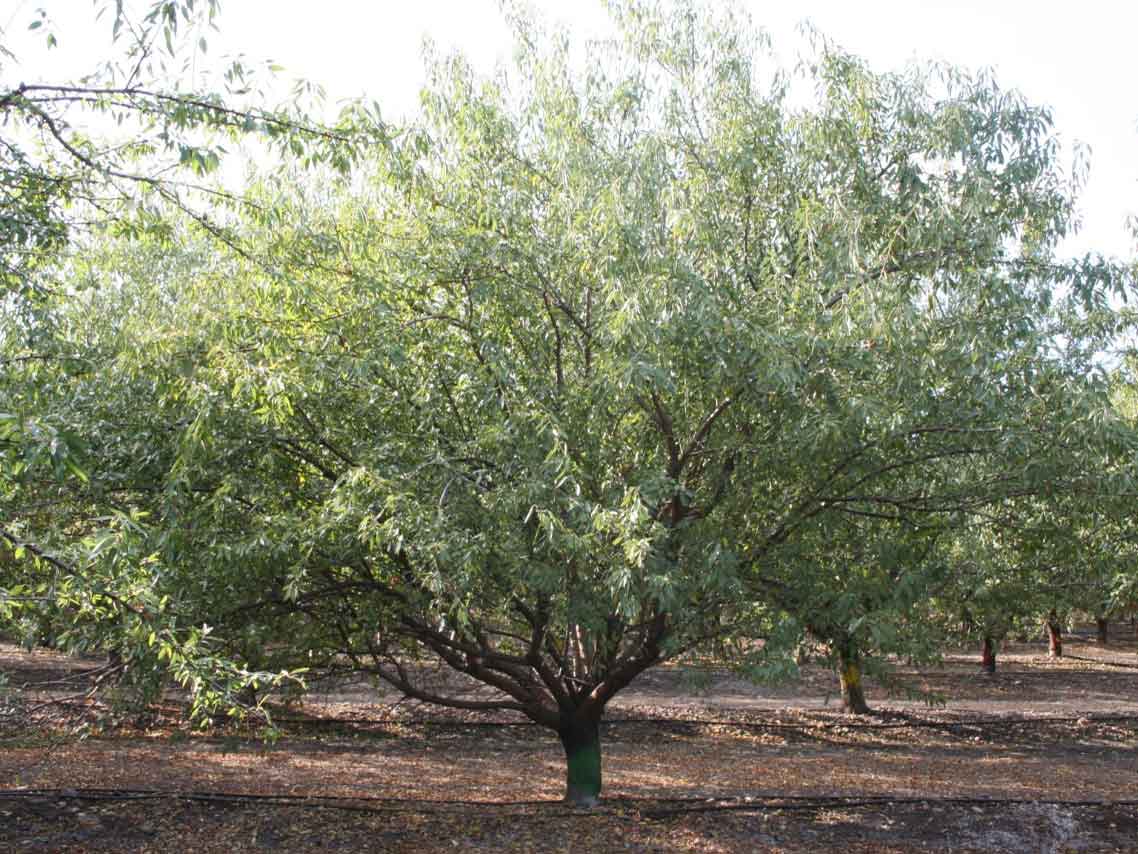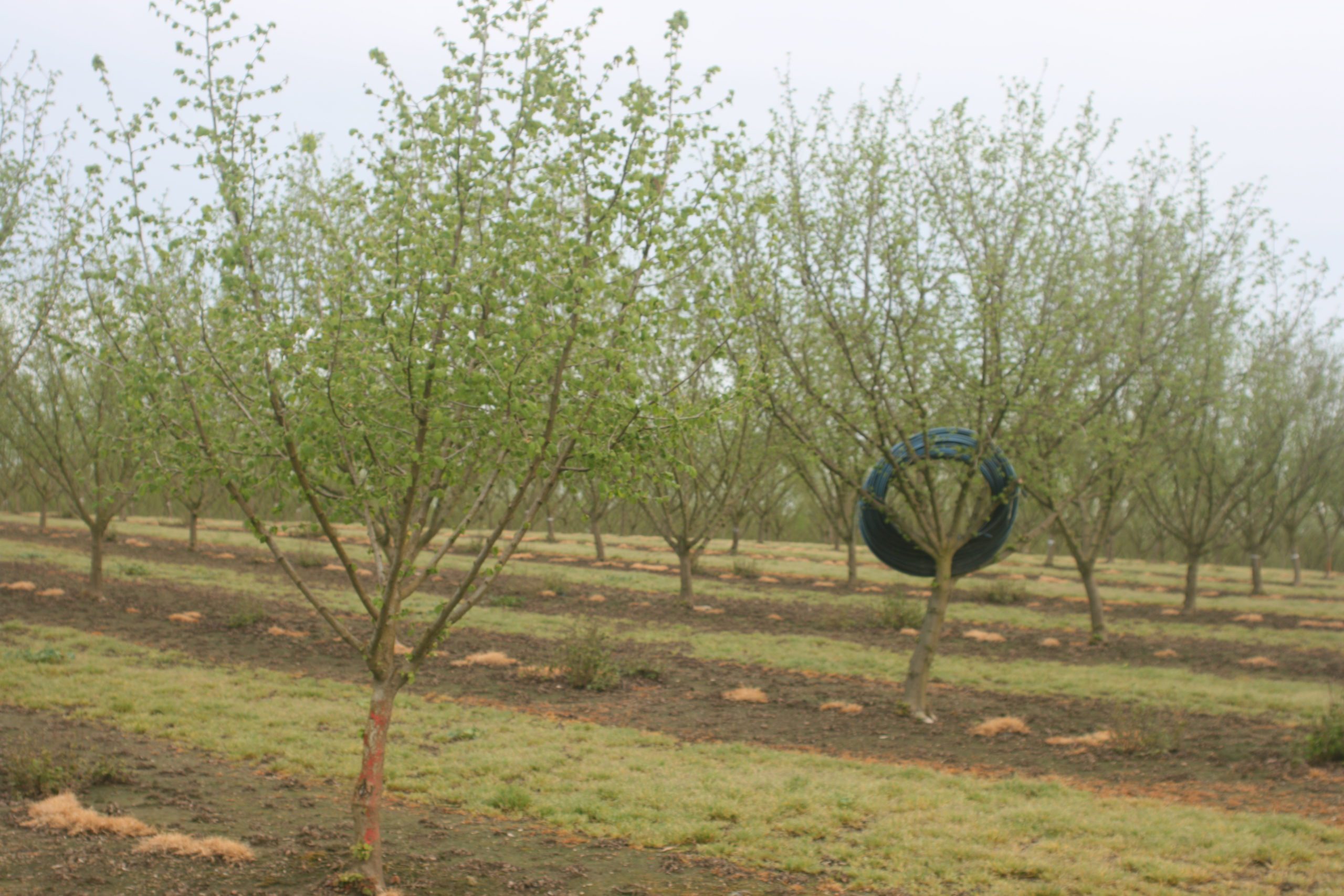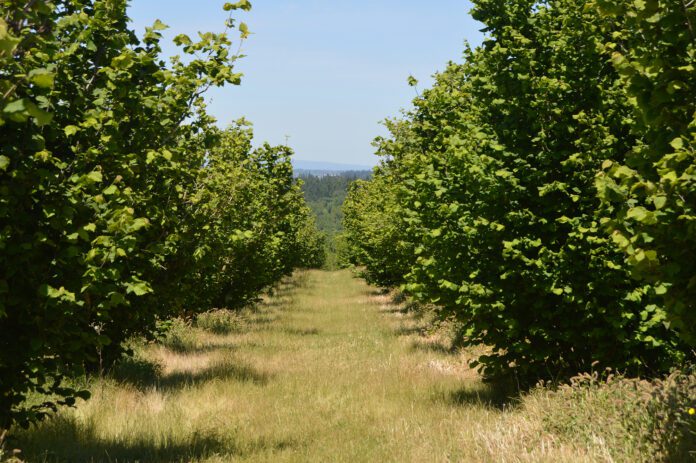
Listen to the audio version of this article. (Generated by A.I.)
Three years ago, Joseph Evers of Our Nut Farm in Dayton, Ore., became determined to switch from conventional to organic farming on his family’s 38‑acre hazelnut orchard.
He shared what he learned during the past three years with other organic hazelnut growers during a grower panel at the Oregon Organic Hazelnut Collective’s Summer Tour, held May 30 at Pratum Farm east of Salem.
“We started conventional, and I guess there are some advantages to that,” Evers said, “but we just didn’t realize how chemical‑dependent conventional farms are, and I just became determined to make this change.”
At the time, Evers said he was fighting a losing battle with the filbertworm. “I had sprayed insecticides, and I was killing off my beneficials, so I was ending up with an aphid program, and I still had moths,” Evers said.
Evers switched to mating disruption three years ago, and since 2023, he has had no problems with the moths. “Over the last two years, I had a zero count,” he said.
Evers’ story was like others that were shared during the full day of presentations and networking at the Eighth Annual Summer Tour.
Sue Chen, an advisory board member of the collective, who served as emcee of the event, noted that the collective works to support organic hazelnut growers by providing stakeholders education, fostering community and offering essential resources. “Our mission is to promote sustainable and organic farming,” Chen said.
Current estimates are that less than 1% of Oregon’s hazelnut acreage is in organic production, but hopes are that a new marketing campaign unveiled at the tour will increase demand for organic hazelnuts and lead to increased production.
On the grower panel, Dennis Carlson, who owns Nature Farms Management out of Dayton and has farms in Woodburn, said he too has had good success managing filbertworm without the use of synthetic pesticides through the use of mating disruption. Both Evers and Carlson use the Isomate FBW Ring.
“That’s probably the easiest way to get away from using some of those pesticides,” Carlson said.
Ben Larson, the third panelist, said he relies on a combination of cover crops on his orchard floor and beneficial predator habitat in areas surrounding his orchard to help keep the filbertworm at bay, in addition to cultural practices designed to disrupt the moth’s life cycle.
“We try to get those nuts off the ground as soon as possible after harvest, because the ones that blow out are likely harboring filbertworm,” Larson said. He uses mowing and grazes pigs to remove the hazelnuts. “We graze our pigs, because pigs love hazelnuts,” he said.
Larson added that his strategy relies on regular monitoring of pest pressure and a willingness to treat when necessary. “We monitor throughout the summer with pheromone traps, because if you do see a huge surge in populations, then that’s when we would consider putting out a spray of Entrust,” he said.
He added that he hasn’t had to treat with Entrust on the family’s home orchard as of yet, but has on some leased ground. “It is a broad‑spectrum spray that will kill a lot of your beneficials too, so use with caution certainly,” he said.
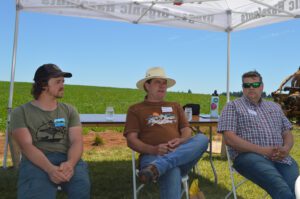
Cover Crops
One constant the panelists shared is that they all use cover crops, although in each case the cover‑crop mix was different.
Larson noted that because his farm originally was in ryegrass seed production, ryegrass has been the dominant species in his cover‑crop mix. “We haven’t really done too much planting as far as cover crops go,” Larson said. “It’s a lot of volunteers. We have over 30 plant species now living in the orchard.”
Larson added that he likes to wait as long as possible before mowing the cover crop in the spring, adding that he had yet to do so at the time of the tour. “I’ll get out there in the next week or so. Right now, it is a 4‑ to 5‑foot‑tall mix of different flowers, legumes and grasses. I always push it a little further each year.”
Evers, conversely, said he mows his cover crop regularly. “We mow it tight, four to five times a year,” he said.
His cover crop consists primarily of annual bluegrass, along with dandelions, both of which came up on a volunteer basis during the farm’s transition to organic hazelnut production.
“Because we had farmed conventionally and used a preemergence herbicide at some point, it was really difficult to get anything growing at first, and I was happy just to see some annual bluegrass come up,” he said. “That has been our dominant cover crop, although other things keep coming in and now we have a beautiful field of dandelions.”
Carlson said he has found fescue makes an excellent cover crop, noting that in working with organic blueberries, he found it more drought‑tolerant than some of the other grass species.
Maintaining a healthy cover crop deeper into the summer, Carlson noted, has helped reduce mice and vole damage in his blueberry acreage, something the ryegrass didn’t provide in hot months.
“As soon as the perennial ryegrass in the middle of the blueberries would go dormant, all the mice that were feeding on the ryegrass moved right over and started just destroying the blueberries,” Carlson said. “Then we put in the fescue, and it stays greener longer and provides a food source for the mice, voles, so that they didn’t just attack the blueberries or the hazelnuts.”
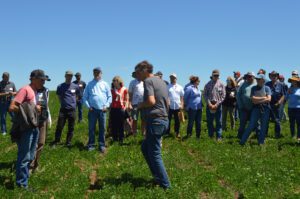
Sucker Control
Sucker control also emerged as a topic of concern during the grower panel. On his farm, Carlson said they applied the OMRI‑certified herbicide Suppress recently.
“And it took care of it really well.”
Sheep can provide good sucker control, the growers said, but they need to be monitored. Carlson said a grower he knows left a herd of sheep in the orchard too long and they began trimming up the crotch of the tree after trimming the suckers.
“And after they did that and there was nothing else they could reach, they started nibbling on the branches,” Carlson said. The grower felt like he left them in a week too long, Carlson said.
The growers also talked about using mechanical devices with blades to cut suckers, but said a grower runs the risk of injuring trees when cutting too close. Particularly young trees, those under 10 years old, are highly susceptible to injury, the panelists said.
Evers said he eventually decided just to bring in a crew each winter. “In the winter, I get a labor crew in there and they spend a week or two just cutting suckers,” Evers said.







